13 Tropical Looking Plants That Will Survive Winter
These hardy perennials and shrubs are tropical looking plants that not only captivate with their stunning foliage and blooms, but also thrive in a variety of climates. And can help to make any garden look lush and exotic.

There's something about being in a garden surrounded by tropical plants that just makes you want to relax.
Maybe it's because you associate them with being on vacation on a tropical island.
Or maybe all of those large colorful flowers and interesting leaves command so much attention that you forget where you are for a little while.
In any case, wouldn't it be great if you could re-create that feeling in your own garden?
To achieve the tropical look, you need a mix of stunning flowers and lush, large-leaved greenery, planted fairly close together to create a layered wall of plants.
Add a water feature or two and you can have your own garden of paradise.
This list of hardy plants that look tropical will help you get started.
1 | Hibiscus shrub (or Rose of Sharon)
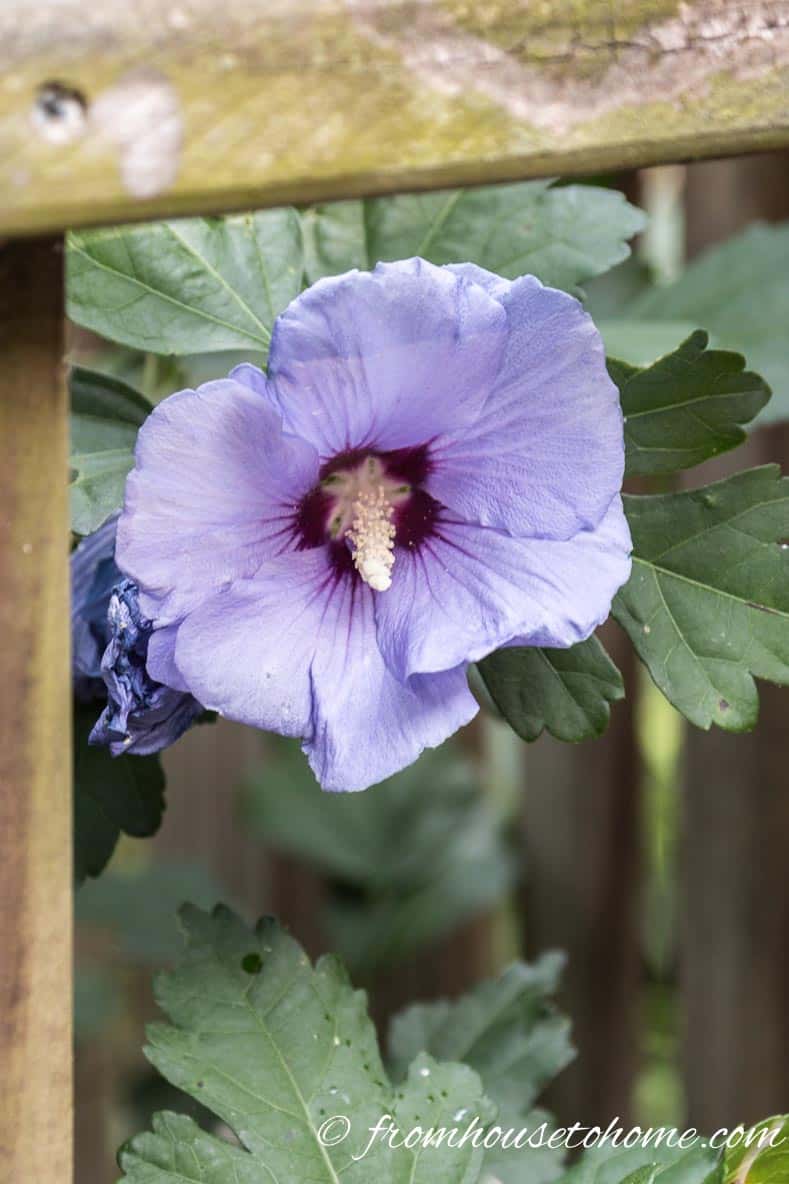
Scientific name: Hibiscus syriacus
Zone: 5 to 9
Exposure: Full sun
Height: 6′ to 12′
Width: 6′ to 8′
Bloom time: Late Summer to Fall (earlier in the South)
Flower color: Pink, red, white, purple or blue
Hibiscus syriacus or Rose of Sharon is a bush that has beautiful tropical-looking blooms.
The flowers are usually 3″ to 4″ across and come in many different colors, including pinks, purples, blues, whites and reds.
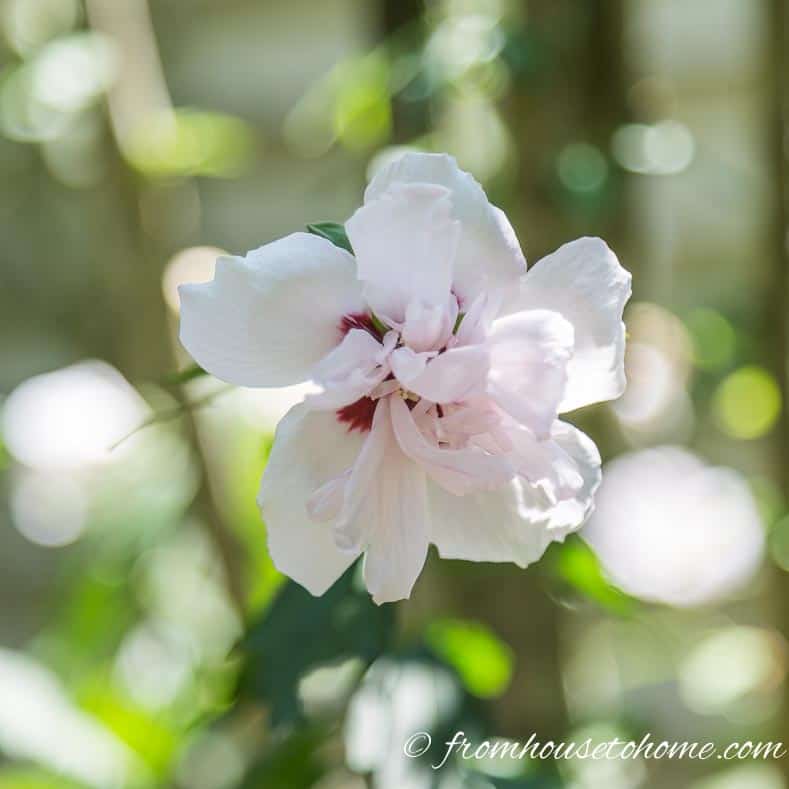
This is a really low maintenance shrub that doesn't require pruning, unless you want to keep the size down.
As an added bonus, it attracts hummingbirds and butterflies, and is deer resistant.
2 | Perennial Hibiscus (or Rose Mallow)
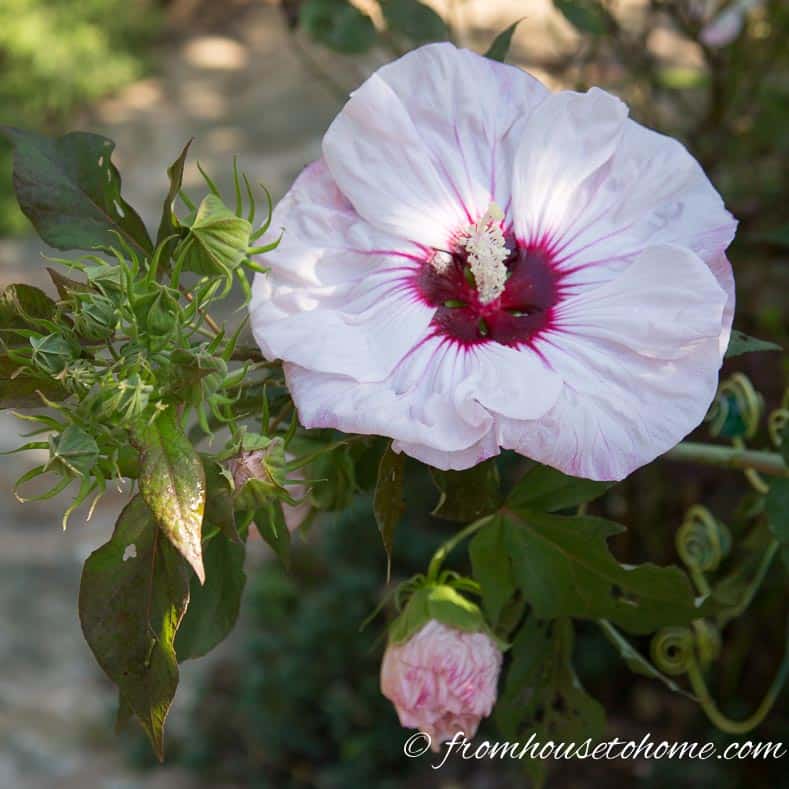
Scientific name: Hibiscus moscheutos
Zone: 5 to 9
Exposure: Full Sun
Height: 3′ to 6′
Width: 3′ to 4′
Bloom time: Late Summer to Fall (earlier in the South)
Flower color: Pink, red, white
Perennial hibiscus has similar shaped flowers to the bush, but they can be more than twice as big, growing up to 10″ across.
They have a more limited color selection (pinks, reds and whites) but the extra-showy flowers are worth it!
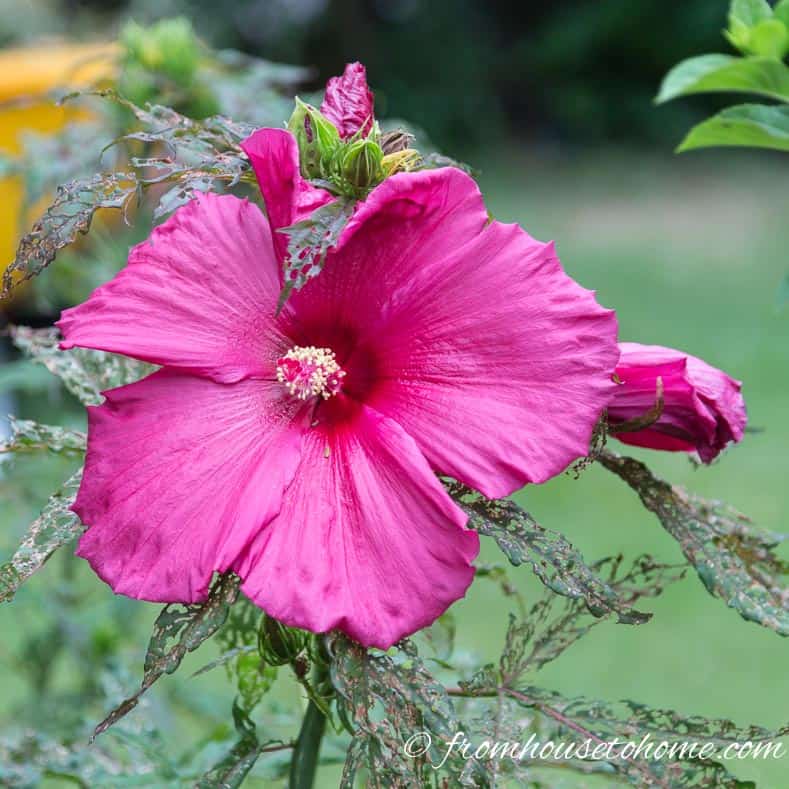
The perennial version requires more water than the bush, and dies down to the ground in the winter.
3 | Bamboo

Scientific name: Phyllostachys
Zone: 5 to 9
Exposure: Full Sun
Height: 3′ to 20′ (depending on the variety)
Width: 3′ to 6′
Bloom time: N/A
Flower color: N/A
Bamboo definitely gives that tropical look and zen feeling to your garden.
It is another fairly easy to grow plant that pretty much takes care of itself.
The only caution with bamboo is that it can be quite invasive.
So make sure that you either buy the clumping kind or grow it in a contained area (a large pot works well.)
4 | Cold hardy banana
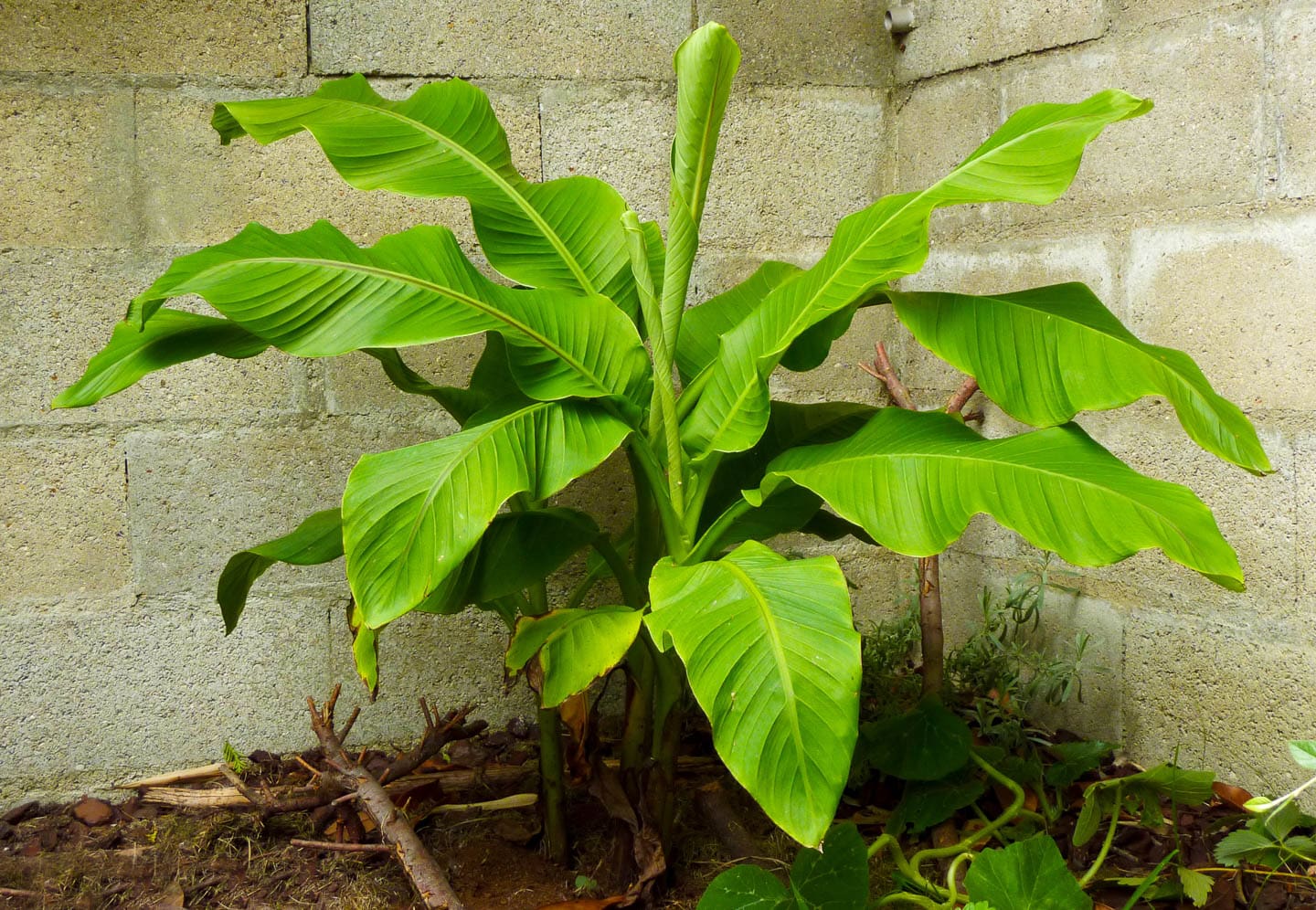
Scientific name: Musa basjoo
Zone: 5 to 9
Exposure: Part sun
Height: 6′ to 14′
Width: 6′ to 10′
Bloom time: Summer
Flower color: Cream, yellow
The hardy banana is considered winter hardy to zone 5 if well-mulched.
Although it produces cream to yellow flowers in the summer, followed by inedible fruit, it is mostly grown for its large, tropical looking leaves.
In colder zones, it is a perennial that will die down to the ground in the winter.
It should be planted in a location that is protected from the wind, since the large leaves are susceptible to wind damage.
5 | Passion flower vine
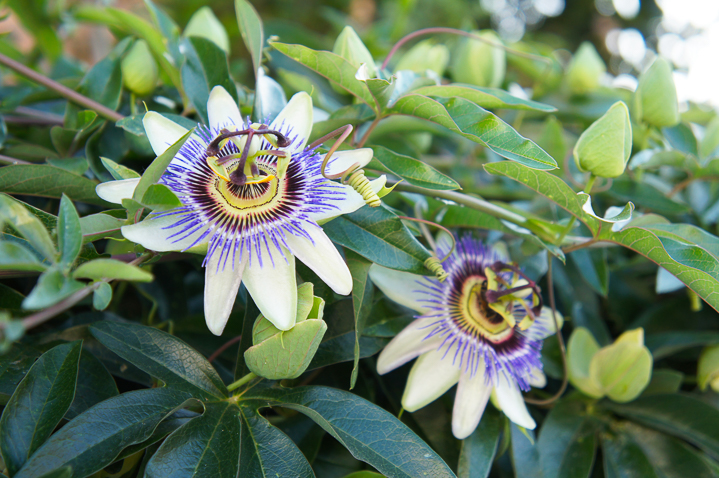
Scientific name: Passiflora
Zone: 6 to 11
Exposure: Full sun to part shade
Height: 10′ to 15′
Width: 5′ to 8′
Bloom time: Summer to fall
Flower color: White, blue, purple, pink
The passion vine is a very fast growing vine with large colorful flowers that can cover a screen in a summer.
It requires regular watering but otherwise is fairly low maintenance.
Pay attention to the zones for the particular variety that you are looking at. Some of them are only hardy in warm zones, while some only grow well in cooler areas.
6 | Hostas
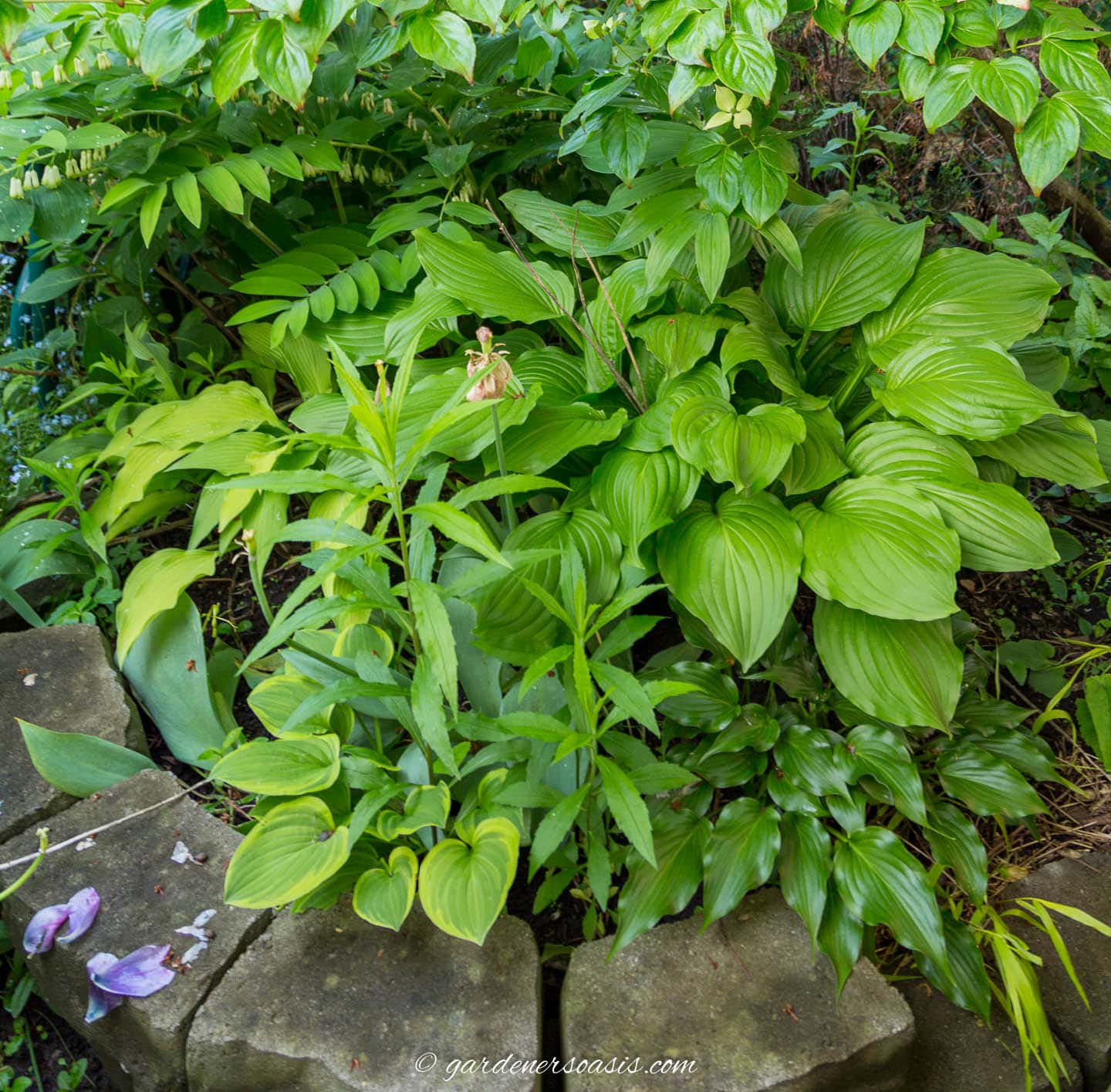
Scientific name: Hosta
Zone: 3 to 8
Exposure: Shade
Height: 2′ to 6′
Width: 2′ to 6′
Bloom time: Summer
Flower color: Pink, purple, white, yellow
Hostas are another large-leaved perennial that can help turn your garden into a tropical-looking paradise.
Most of them are low-growing and usually prefer the shade which makes them perfect for filling in the ground area under your other plants.
However some of them can grow up to 6 feet tall with massive leaves. So be sure to check the tags to get the variety that fits your space.
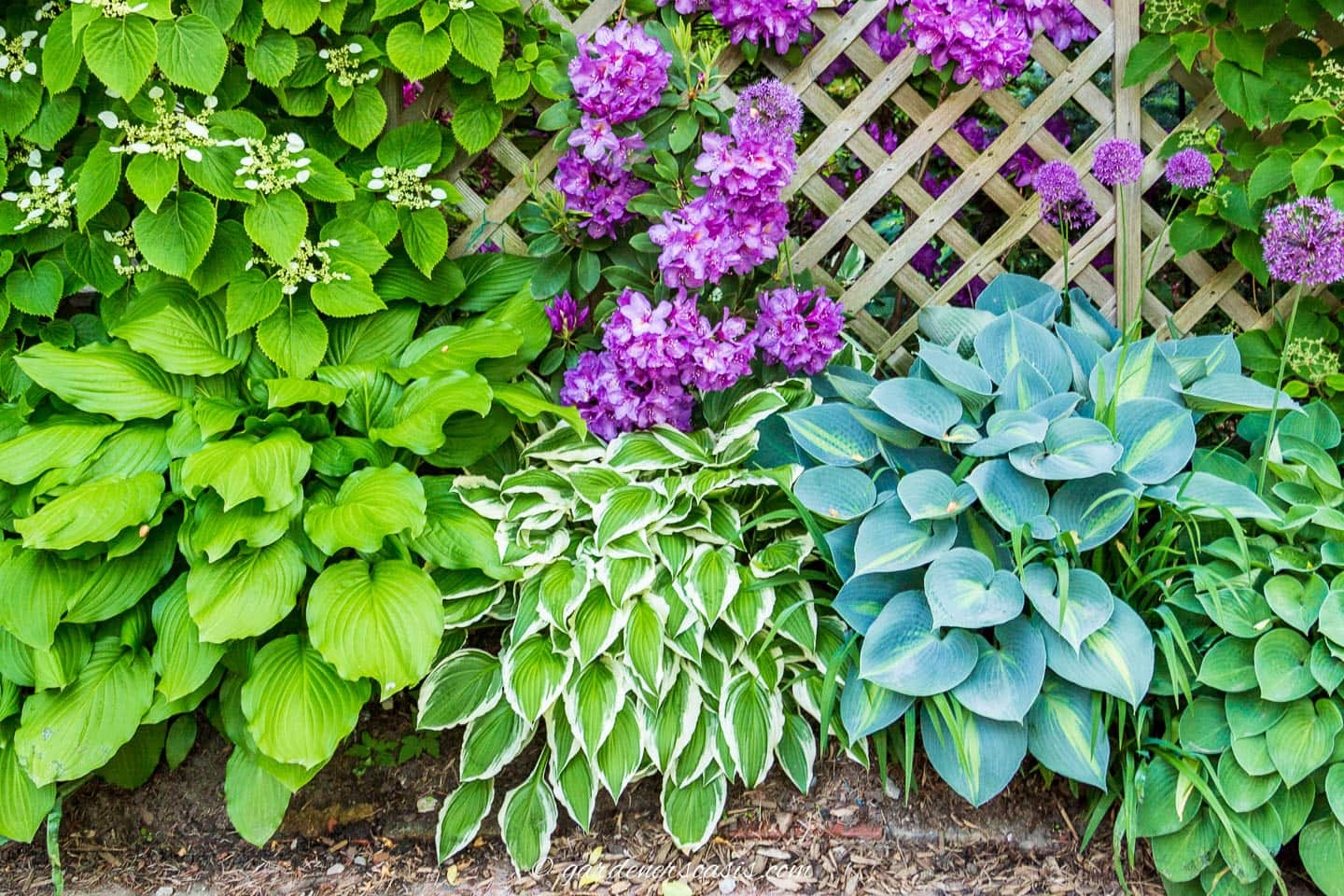
Group them together with other varieties of Hostas and you will have a lush ground cover.
7 | Lily of the Nile

Scientific name: Agapanthus
Zone: 6 to 11 (depending on the variety)
Exposure: Full Sun
Height: 2′ to 3′
Width: 2′ to 4′
Bloom time: Late Spring to Summer
Flower color: Blue, purple, white
Lily of the Nile produces beautiful blue balls of flowers on long flower stalks that will add some architectural interest to your garden.
It requires regular watering, and can be a little finicky to get started. But the flowers are so pretty it is worth a try!
Make sure to get a variety that is hardy in your gardening zone, since quite a few of them will only survive the winter in warmer areas.
8 |Ferns
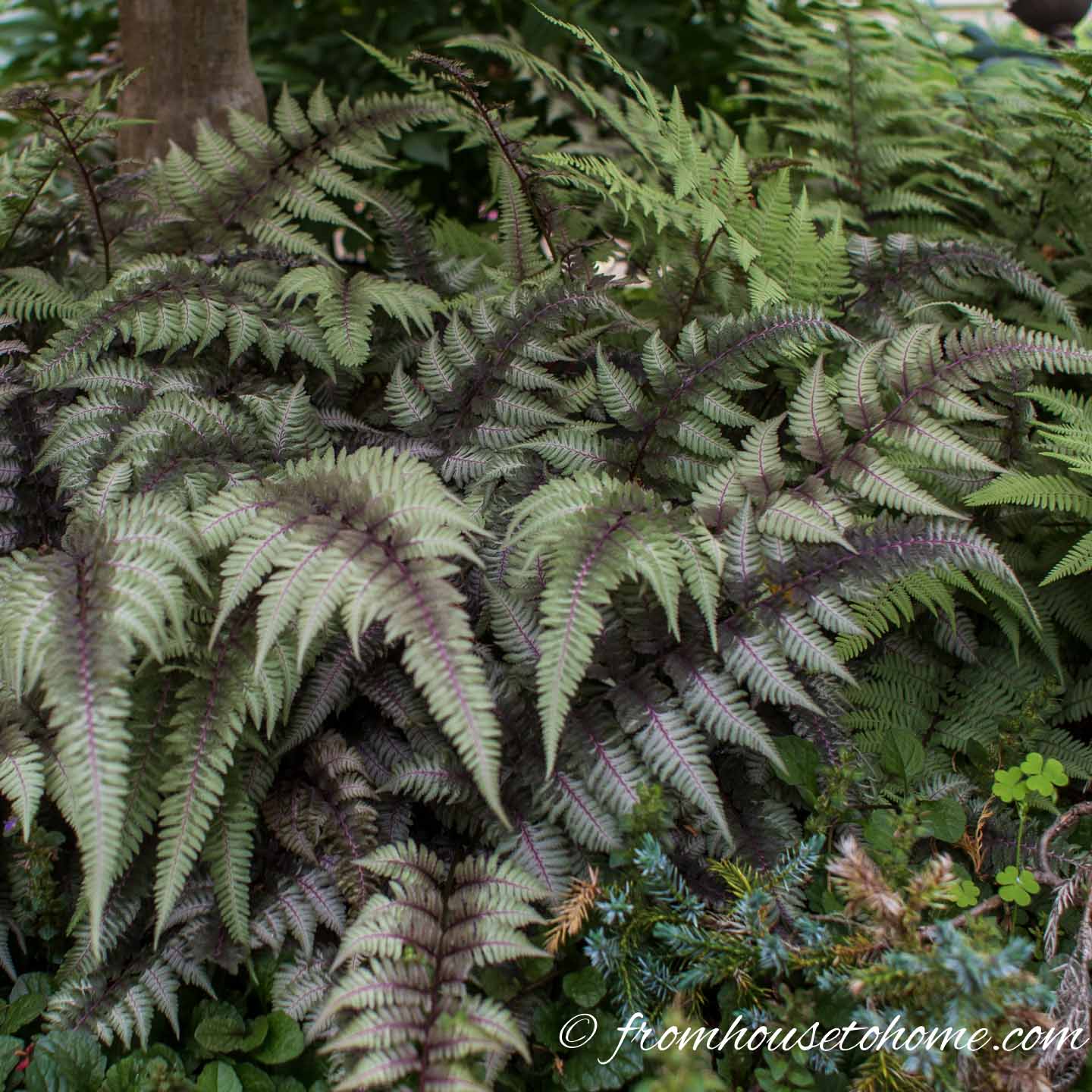
Zone: 3 to 11
Exposure: Shade to part sun
Height: 2′ to 6′
Width: 2′ to 6′
Bloom time: N/A
Flower color: N/A
There are so many varieties of ferns that you are sure to find some that thrive in your garden.
Most areas also have very pretty native ferns which are really easy to grow since they are so well adapted to the climate.
While most ferns are low growing and prefer shaded areas, you can also find large 6′ varieties and some that grow in full sun.
So check your local nurseries to find the ferns that suite your situation the best.
9 | Climbing Hydrangea
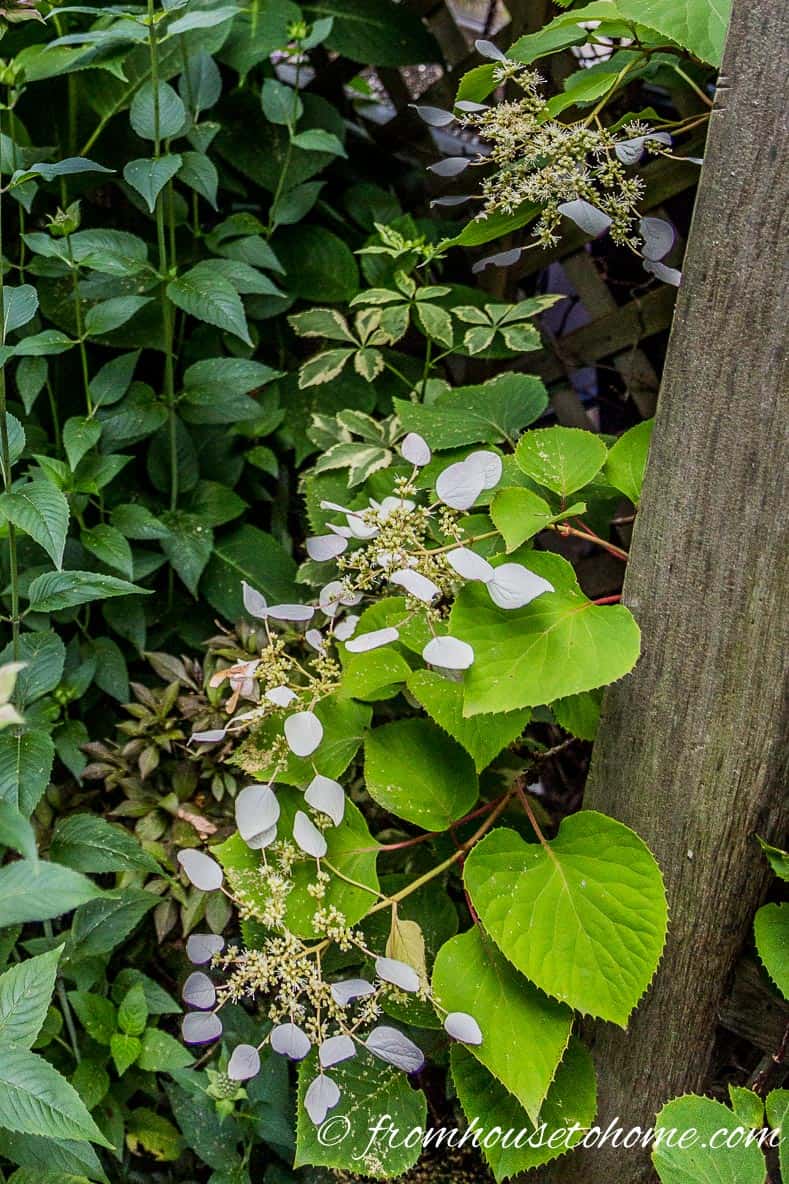
Scientific name: Hydrangea anomala petiolaris
Zone: 5 to 9
Exposure: Part Sun to Full Sun
Height: 15′ to 20′
Width: 8′ to 10′
Bloom time: Summer
Flower color: White, pink
Climbing hydrangeas have beautiful wide green leaves and bracts of white or pink flowers that make a big show on a trellis, fence or wall.
They cling to surfaces using aerial rootlets which makes them able to hang on to pretty much any structure.

They are a little tricky to get started (it usually takes 2 or 3 years). But once they get going, the show will be worth the wait.
10 | Japanese Fatsia
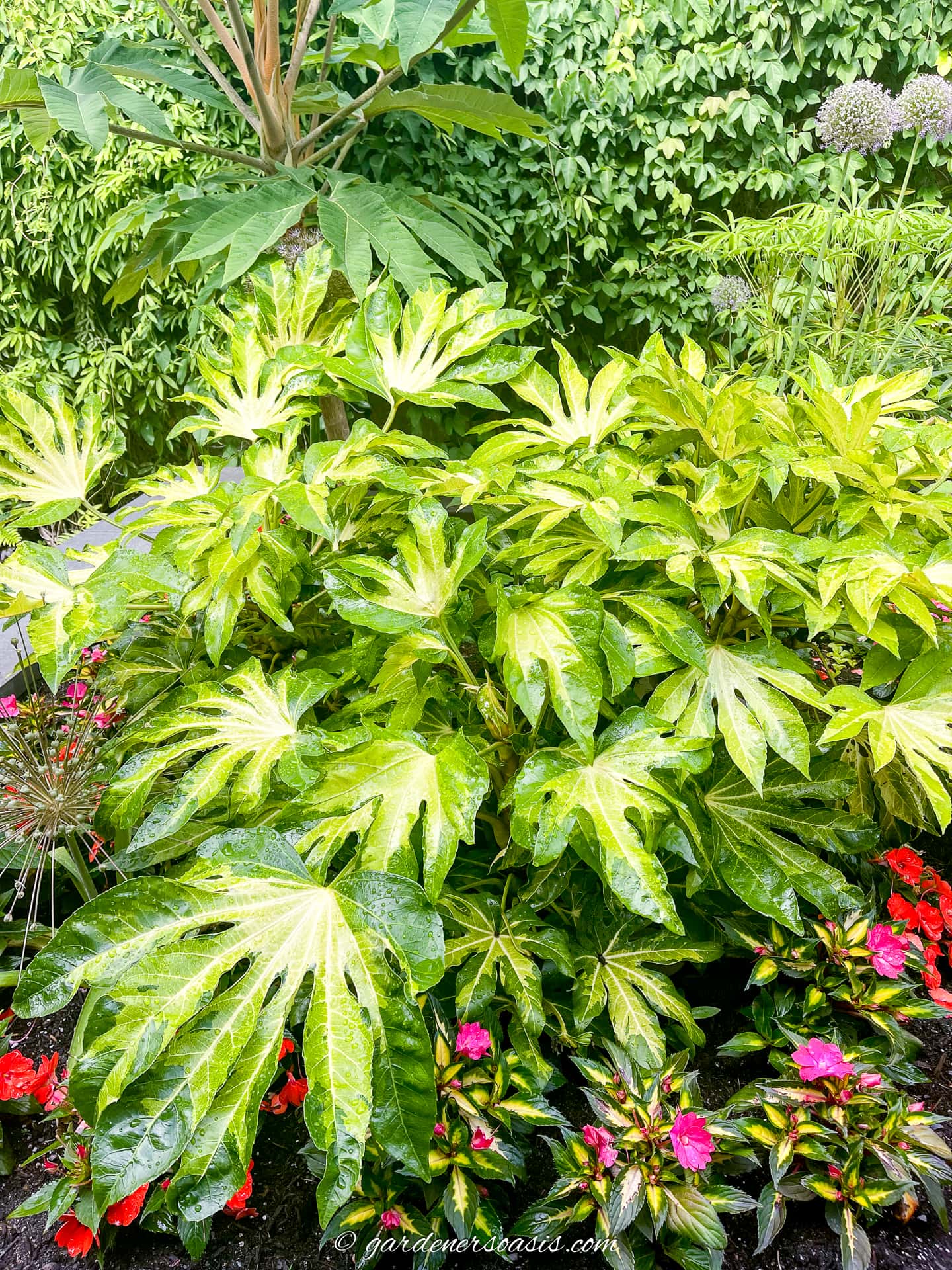
Scientific name: Fatsia japonica
Zone: 7 to 11
Exposure: Shade
Height: 4′ to 12′
Width: 5′ to 10′
Bloom time: Fall
Flower color: White
Fatsia japonica is a tropical-looking evergreen shrub that can handle colder temperatures.
It can grow to be quite a large plant and has huge, glossy leaves that are up to 16″ across.
The leaves can be a plain dark green or variegated (like the one in the picture above), depending on the variety.
Clusters of white flowers appear in the fall and last for several weeks.
With its size and lobed leaves, Japanese Aralia almost looks like something out of the Jurassic Park movies. A perfect addition to your tropical-looking garden!
Get more information about Fatsia here.
11 | Elephant Ears
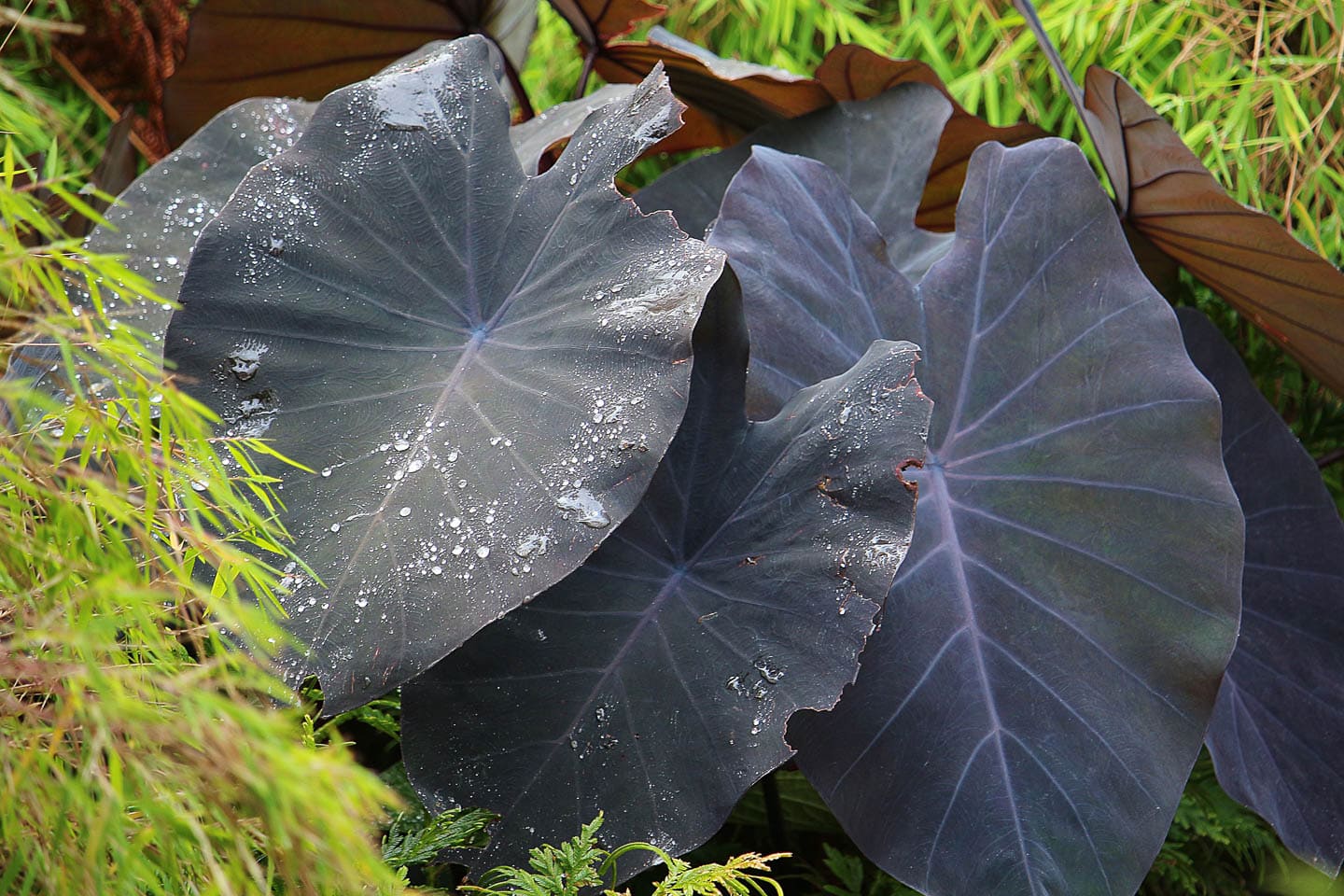
Scientific name: Colocasia
Zone: 7 to 11, grown as an annual in colder climates
Exposure: Part shade to full sun
Height: 3′ to 8′
Width: 2′ to 6′
Bloom time: N/A
Flower color: N/A
Known for their huge, heart-shaped leaves, Elephant Ears bring an exotic touch to any landscape.
There are several different varieties available that each have their own unique features, such as different leaf colors, sizes, and patterns.
While these plants are only perennial in warmer areas, they grow quickly and can be planted as an annual in colder zones.
12 | Windmill Palm
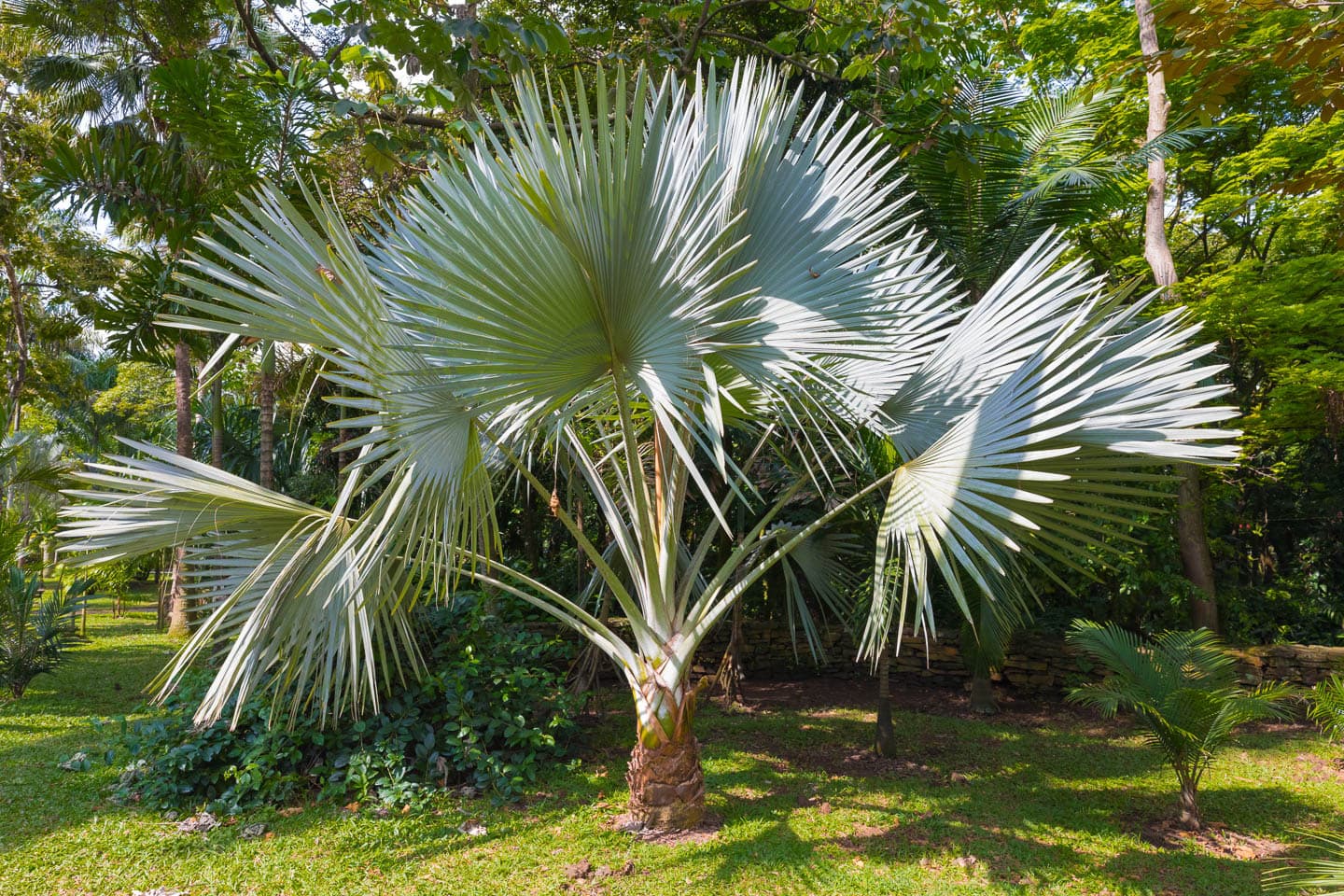
Scientific name: Trachycarpus fortunei
Zone: 7 to 11
Exposure: Sun to part sun
Height: 20′ to 40′
Width: 10′ to 20′
Bloom time:
Flower color:
Palm trees are one of the most recognizable tropical plants. Unfortunately, most will only grow in tropical environments.
However, the Windmill Palm is an exception.
It is an attractive, cold-hardy palm tree that can be grown in zone 7 in a sheltered location.
It is known for its fan-shaped leaves that grow in a circular pattern at the end of long stems and can span up to 3 feet across.
13 | Cast iron plant
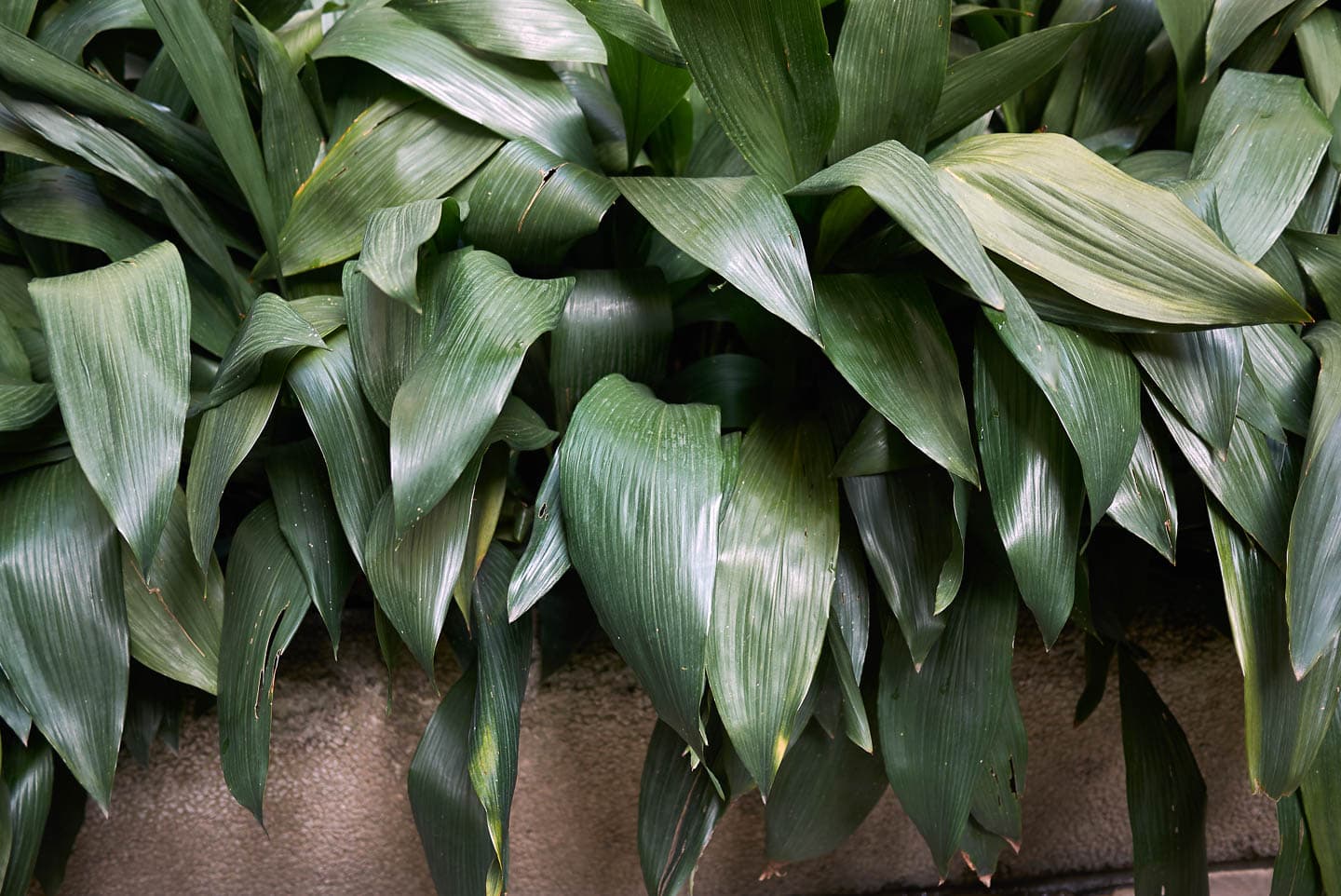
Scientific name: Aspidistra elatior
Zone: 7 to 11
Exposure: Shade
Height: 2′ to 3′
Width: 2′ to 3′
Bloom time: Spring
Flower color: Purple
The Cast Iron Plant features long, strappy, dark green leaves that grow directly from the underground rhizomes. And are great for the front of a border in a tropical-looking garden.
It has a clumping growth habit, is slow growing and requires very little maintenance. A perfectly-behaved addition to any garden.
Insignificant purple flowers may appear at soil level in the spring.
In colder zones, it can be grown as a house plant during the winter and then taken outside for the summer.
That's it for our list of tropical looking plants. Hopefully you have found a few to plant in your own garden.
Other garden ideas you might like
- How to create a secret garden
- Bushes to plant under trees
- Shade-loving evergreen perennials
- The best shrubs for a privacy hedge
Have comments or questions on our tropical looking plants? Tell us in the section below.
This post was originally published on June 29, 2016 but was updated with new content on November 23, 2024.

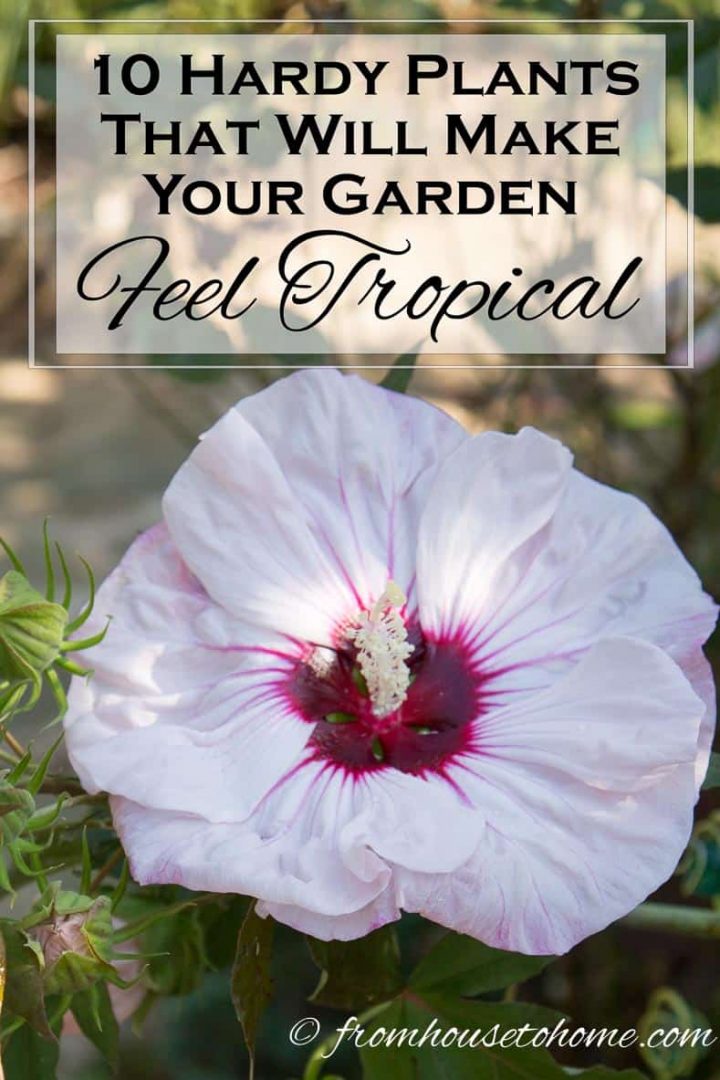
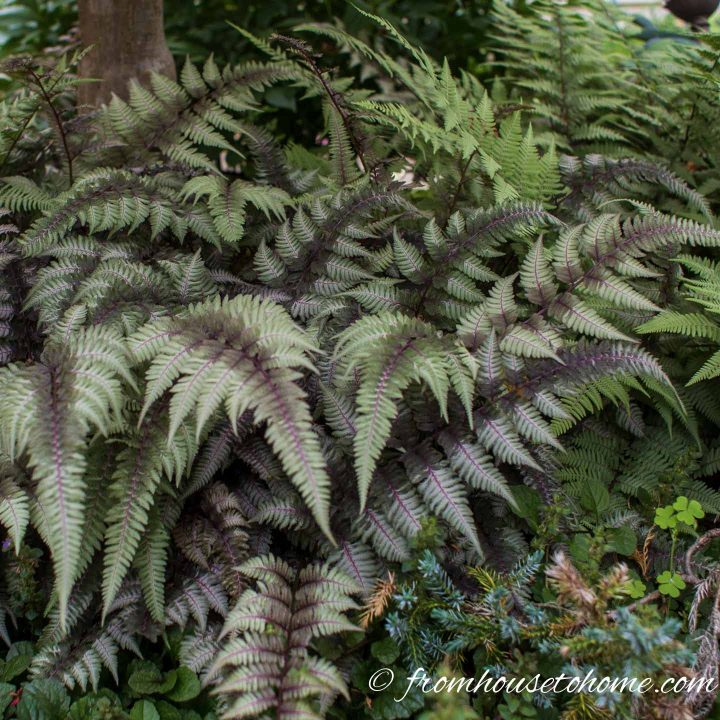
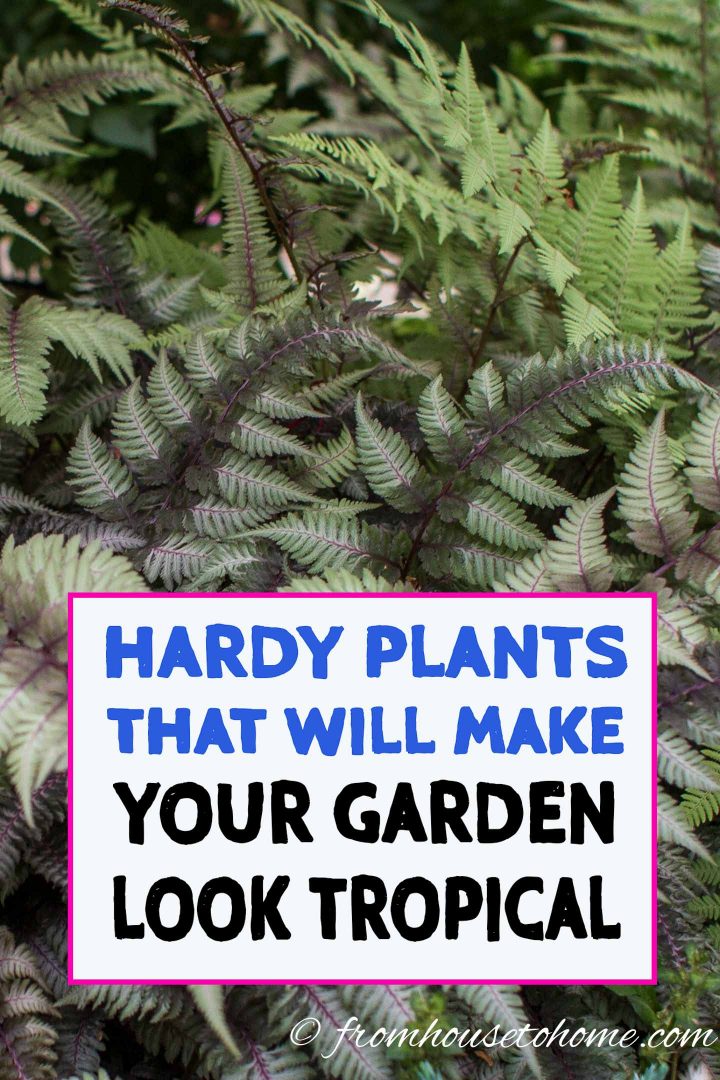


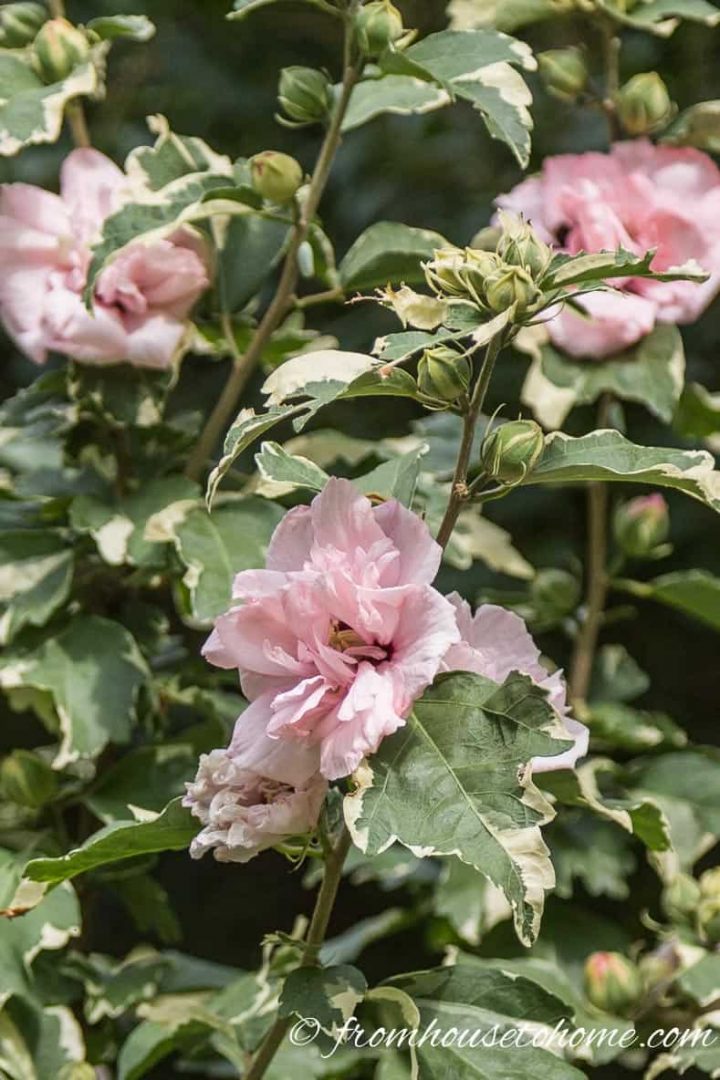
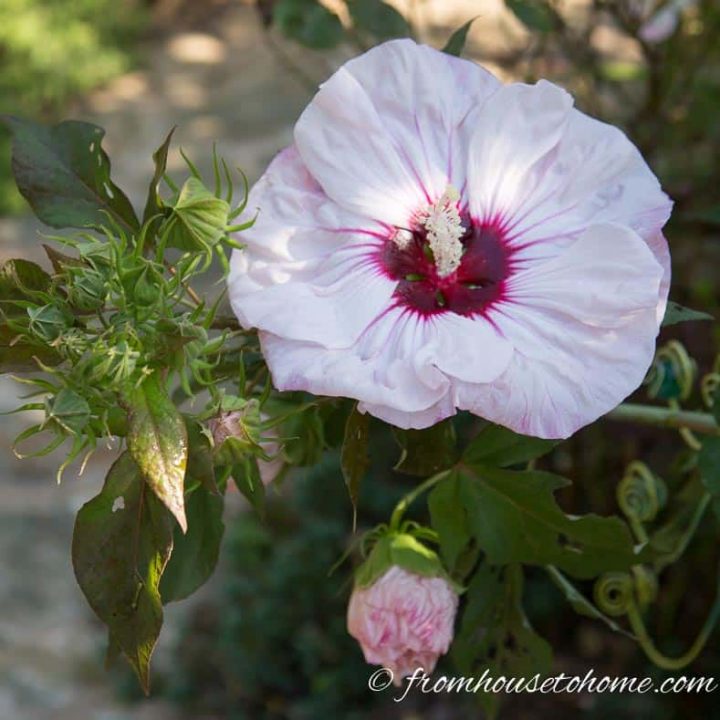
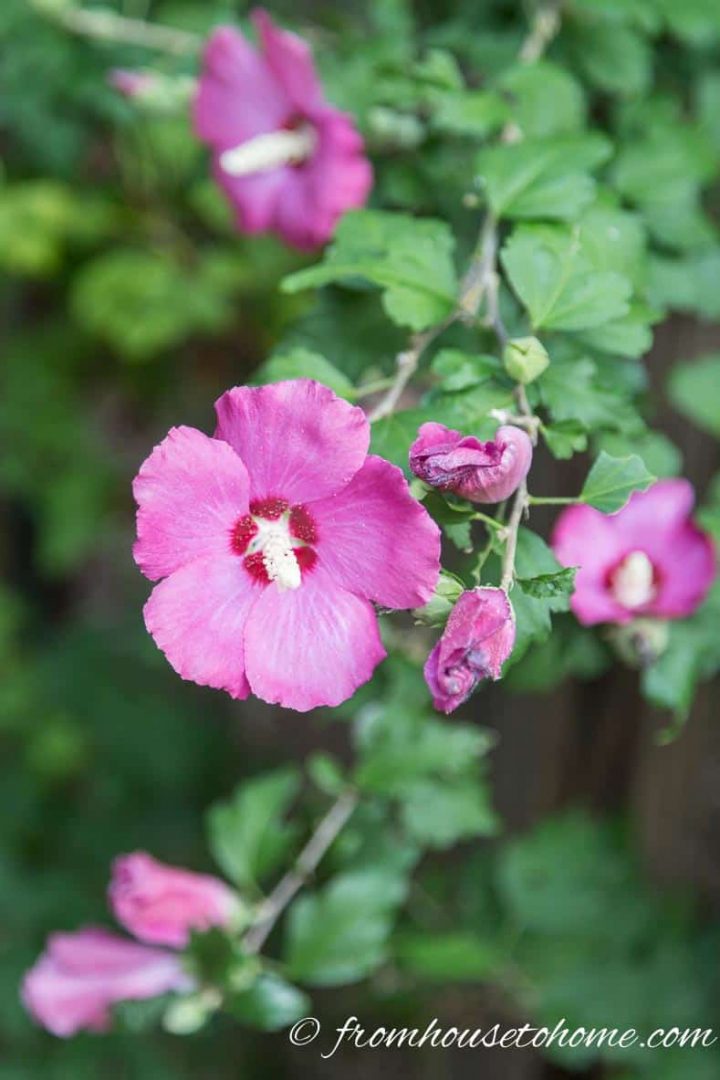

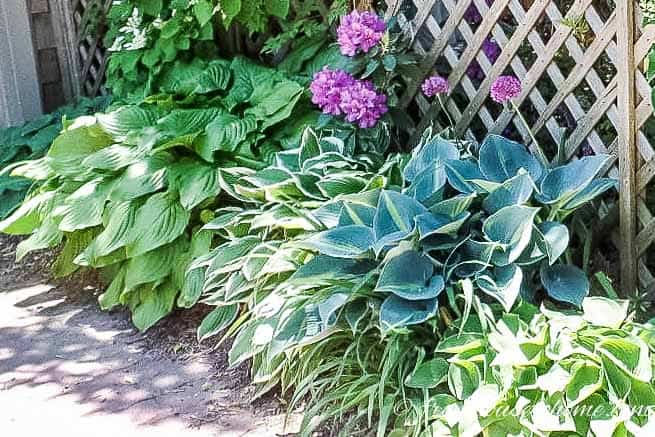
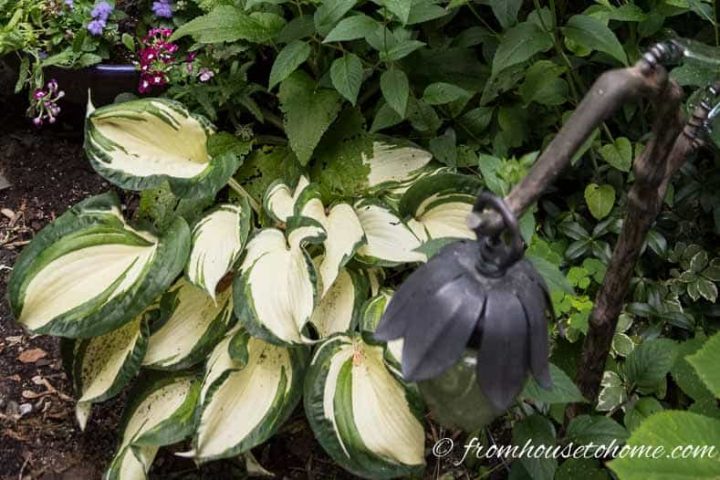
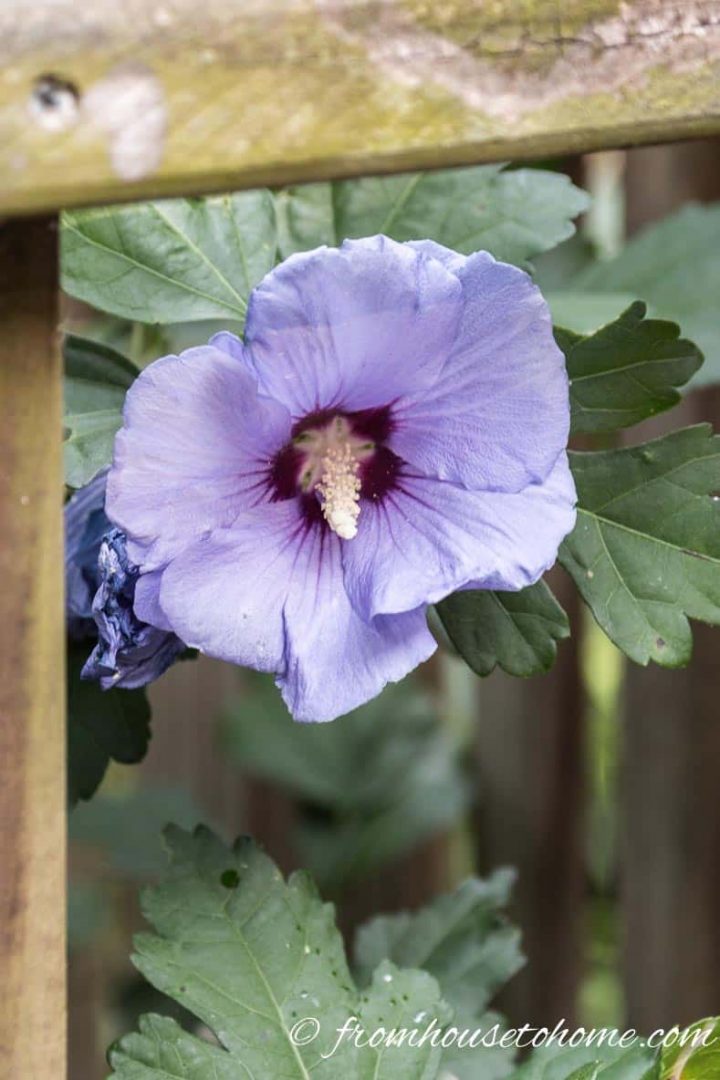
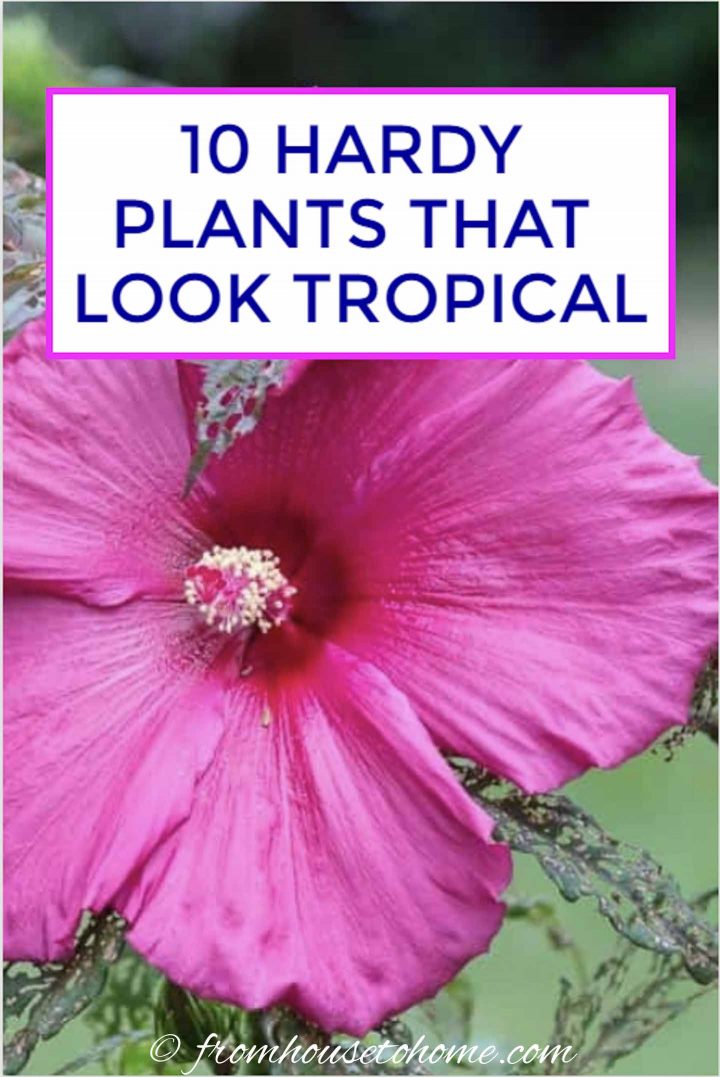













Hi, I have an existing established aucuba japonica and a wiegela in my back garden. I want to create a tropical garden. Would you remove these and opt for big planting, or keep them?
Hi…I think the aucuba japonica would work quite well with a tropical garden. The weigela could be a little harder to work in, so I might consider taking it out or moving it elsewhere. But I also think it depends on how much you like it 🙂